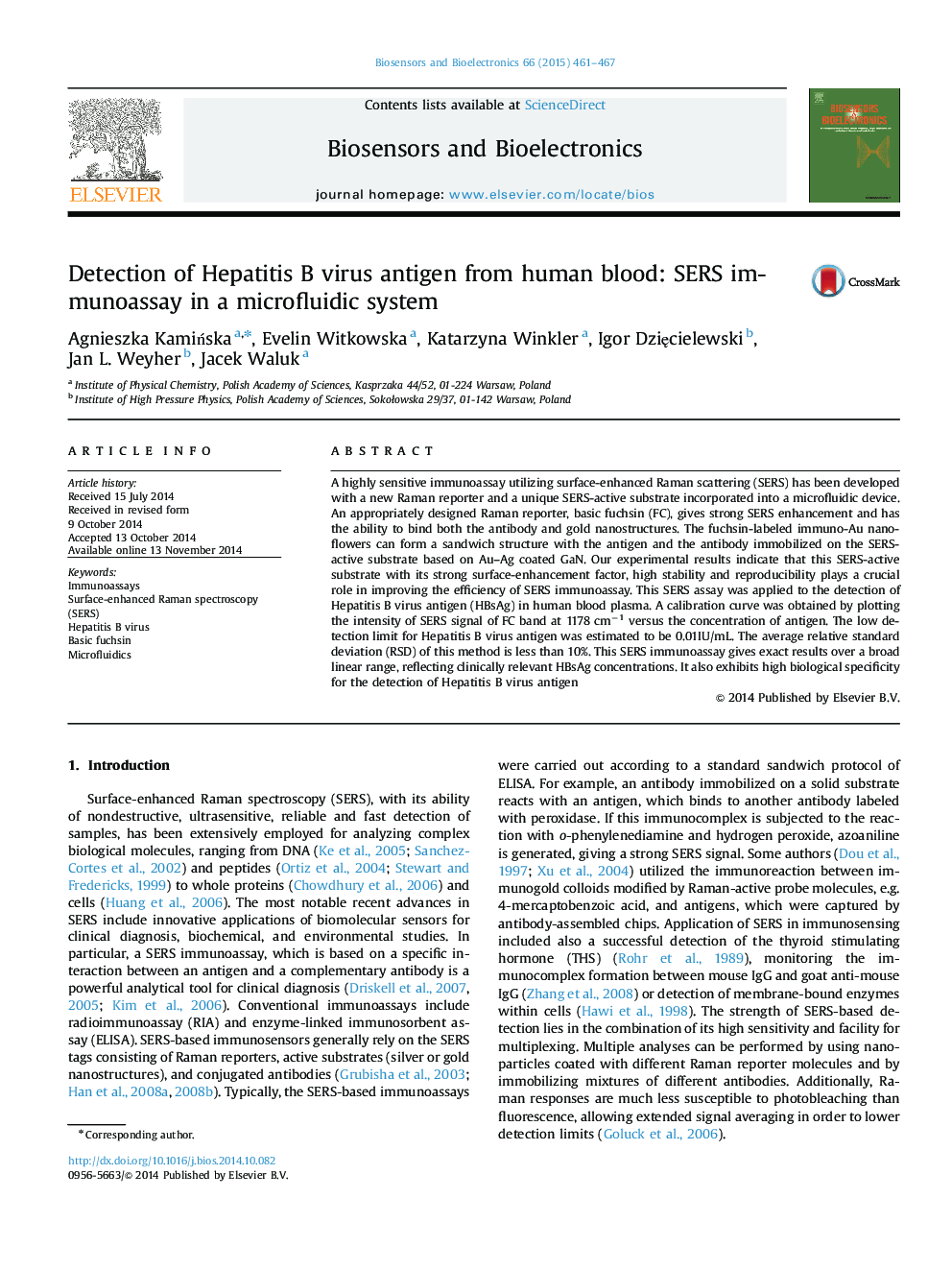| Article ID | Journal | Published Year | Pages | File Type |
|---|---|---|---|---|
| 7232804 | Biosensors and Bioelectronics | 2015 | 7 Pages |
Abstract
A highly sensitive immunoassay utilizing surface-enhanced Raman scattering (SERS) has been developed with a new Raman reporter and a unique SERS-active substrate incorporated into a microfluidic device. An appropriately designed Raman reporter, basic fuchsin (FC), gives strong SERS enhancement and has the ability to bind both the antibody and gold nanostructures. The fuchsin-labeled immuno-Au nanoflowers can form a sandwich structure with the antigen and the antibody immobilized on the SERS-active substrate based on Au-Ag coated GaN. Our experimental results indicate that this SERS-active substrate with its strong surface-enhancement factor, high stability and reproducibility plays a crucial role in improving the efficiency of SERS immunoassay. This SERS assay was applied to the detection of Hepatitis B virus antigen (HBsAg) in human blood plasma. A calibration curve was obtained by plotting the intensity of SERS signal of FC band at 1178Â cmâ1 versus the concentration of antigen. The low detection limit for Hepatitis B virus antigen was estimated to be 0.01IU/mL. The average relative standard deviation (RSD) of this method is less than 10%. This SERS immunoassay gives exact results over a broad linear range, reflecting clinically relevant HBsAg concentrations. It also exhibits high biological specificity for the detection of Hepatitis B virus antigen
Keywords
Related Topics
Physical Sciences and Engineering
Chemistry
Analytical Chemistry
Authors
Agnieszka KamiÅska, Evelin Witkowska, Katarzyna Winkler, Igor DziÄcielewski, Jan L. Weyher, Jacek Waluk,
